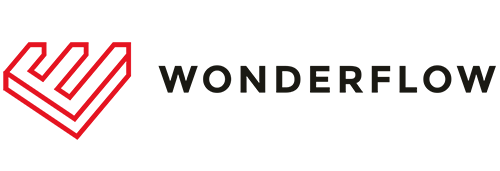In this article, we attempt to bring more clarity to the concept of focus groups, particularly in the case of product development. In other words, what is a focus group, the summary of steps on how to execute one, situations for when you’d need to conduct one, several critical disadvantages of focus groups, and a game-changer alternative solution to replace this old-school market research method.
What is A Focus Group?
“A focus group is a face-to-face meeting with a sampling of customers that helps you learn about their needs and perspectives. Focus groups also enable your customers to find out more about your company.”
– MarS
Traditionally, a market research agency would usually be the one to find and carefully select a group of people (participants) for the focus group, then organize the session, and analyze the gathered feedback afterward.
Whether used to validate your product solution, brand communications, general strategies, or more, focus groups cannot help you solve market problems. Instead, they’re intended to support the process of problem-solving.
Focus groups usually involve a diverse selection of target consumers. It’s mainly led or guided by one or a few researchers by asking a set of questions to the participants who can freely engage with one another.
Although the traditional qualitative research method isn’t necessarily dead, it has evolved immensely. Here are some of the main types of focus groups:
- Stand-alone – when the focus groups are your only source of obtaining data, and they serve as the primary source of data
- Supplementary – A type of focus group that is added to the alternative data collection options you have and to help enhance your choice
- Multi-method design type – when you use multiple data collection sources and a certain method does not depend on whether you’ve used another
- Online – focus groups are traditionally held in person, but they have evolved to become remote or online focus groups, usually requiring video calling, strong and secure internet, and a multitude of new challenges and opportunities
Main Steps for Conducting Focus Groups in Product Development
Targeted focus groups in product development typically involve these main steps:
- Identify product target areas, objectives, and the right focus group questions
- Identify focus group participants and the use of purposive sampling
- Use general media outlets to promote and recruit the potential focus group participants
- Perform a rigorous primary and secondary screening of the potential participants
- Decide whether a product needs refinement; if yes, see step 6; if no, skip to step 7
- Plan for quality product demonstrations (or listings of currently available product features in the market to discuss with participants), all before starting the actual focus group
- Conduct the Alpha focus group interview where participants help to define product requirements and priorities of product design
- Conduct beta focus groups to mainly refine the product’s appearance that the manufacturer does through a prototype’s critique of key design features
Cases for When Focus Groups Are Needed
Focus groups as a means to design and develop better products have always been done by companies to understand their target customers better. There are many different reasons why businesses conduct product-oriented focus groups. Some of those purposes include:
- To gather what people think about a certain concept, existing or new, by possibly using props or visuals as guiding examples (and so participants can imagine what it would look like)
- To understand better the purchasing process, especially if it is complex, by breaking down issues into simpler parts
- To identify and understand where certain customer satisfaction and dissatisfaction lie on the customer journey and whether customers’ issues involve employees, suppliers, etc.
- To identify what it is exactly that customers need by seeing where a certain touchpoint of the customer journey gets complicated
- To identify whether there are various factors influencing the customers’ motives and what they are exactly
- To understand what participants think and how they feel and perceive certain features of a brand or service
- To understand different use cases of your products or services
- To capture the reactions and opinions of a new product by showing it to the sampled group of participants
Main Drawbacks of Focus Groups

Less freedom of verbal expression
In a group setting like a focus group, individual participants are more likely to become hesitant about sharing their personal opinions over a given topic, especially worrying if their feedback could offend or conflict with another’s perspective or even become criticized.
Therefore, participants may not always be as honest as you’d want them to be. Compared to other market research methods, the collected feedback would not be as in-depth.
Additionally, the power of groupthink may occur in focus groups where more and more participants may start to feel loyal towards the overall group, caring more about what everyone else thinks rather than what the individual themselves thinks. Thus, the results are likely to be less valid and reliable.
Little talk time and low engagement
Focus groups are typically conducted for only a few hours. Thus, this may leave little talk time for each participant. And when some members get the chance to talk, they may feel they need to rush their thought process, thus sharing only limited information. Otherwise, if and when there’s no major time crunch, respondents could be less pressured by time and thus, share more information, some of which can be potentially valuable for the moderator or analysts.
At the same time, despite the focus group concept name, people are not always focused, especially if it requires them to sit in a room with other strangers for about two hours. Eventually, some may show gestures of agreement or disagreement, rather than speaking, by nodding or shaking their head.
The moderator or other members can easily misinterpret such gestures, thus becoming more likely to create a sort of misunderstanding of an idea that could potentially influence the product’s success or failure.
Moderator can stir biasness
Focus group outcomes are greatly influenced by the moderators. Intentionally or unintentionally, they may apply their own personal biases into the discussion. This can lead to an inaccurate representation of how the group feels about a certain topic.
Focus group facilitators can also sway participants’ thoughts towards a certain idea and influence them to make certain assumptions or conclusions about an idea or product. Participants may withhold their true and honest opinions in fear of having their views differ from those of the moderator or disappointing the moderator.
Not easy for B2B companies
It is easier to conduct focus group interviews from a B2C perspective than B2B (although not impossible). This is mainly because there can be quite a logistical challenge when collecting samples of company representatives for product demonstrations.
Each organization’s needs can vary greatly. B2B businesses usually already offer personalized support to their respective clients.
Risk of conflict and violent disputes
Despite many moderators’ attempts to reduce as many distractions as possible to achieve successful focus group outcomes, discussions can still get heated, particularly if members are sensitive to certain topics.
If, for whatever reason, a product topic or question brings up politics or religion, then disagreements can escalate quickly due to some sensitive participants. People’s disagreements can also lead to anger and violent behaviors. Some may even be hesitant to answer in front of everyone.
No guarantee of full participation
Regardless of all the rigorous screening and planning, there’s still no guarantee of members’ involvement or attendance. Due to any external factors that can occur in an individual’s daily life, some participants may not show up, or some will not be feeling up to the task (or question in this case).
People’s behavior is unpredictable, and sometimes, a personal event may interfere with their answers in focus groups or how they respond.
Some members may even not start to vocalize their opinions until after a while during the group interview. This can be due mainly to wanting to observe first as much as possible.
Costly to execute
Compared to surveys, focus groups are more expensive to organize and execute because most participants expect some sort of compensation for their given time.
On top of that, more expenses accrue related to the admin side, such as materials and resources needed for product demonstrations, development of quality questions, and more.
For instance, if something goes wrong during the planning and execution, like when the right questions don’t get asked or if a participant doesn’t show up, there’s basically the risk of the focus group being a failed investment. You obtain unuseful information for market research.
Tech-driven Alternative Solutions to Focus Groups
What if there’s a way to really understand what the customers are thinking, saying, or feeling without your business’ interference since it may skew opinions?
Nowadays, alternative solutions to focus groups and surveys are tech-driven, such as AI-based text analytics, can automatically collect, sort, and analyze customer opinions from just about anywhere for highly accurate, honest, and in-depth results—for instance, the increasing adoption of Wonderflow’s unified VoC analytics platform by mainly global consumer brands.
Companies save time, money, and resources by choosing the software over traditional research methods. Some of Wonderflow’s attractive capabilities include:
- A highly advanced NLP-backed artificial intelligence that runs 24/7, collecting, sorting, and analyzing millions of customer feedback and consumer-generated data, all to present in a visually appealing and smooth-gliding user dashboard
- Sources extend beyond focus groups, such as data from forums, call centers, surveys, social media, private chats, emails, etc.
- Businesses can gain granular and unbiased consumer insights within days, all without having to involve many new people, settle disputes, set up product demonstrations, and more
Overall, before planning your next online or offline focus group, consider whether it’s worth the investment. This traditional research method involves a great deal of trials and errors, plus running the high risk of inaccurate results due to multiple uncontrollable factors and more.




